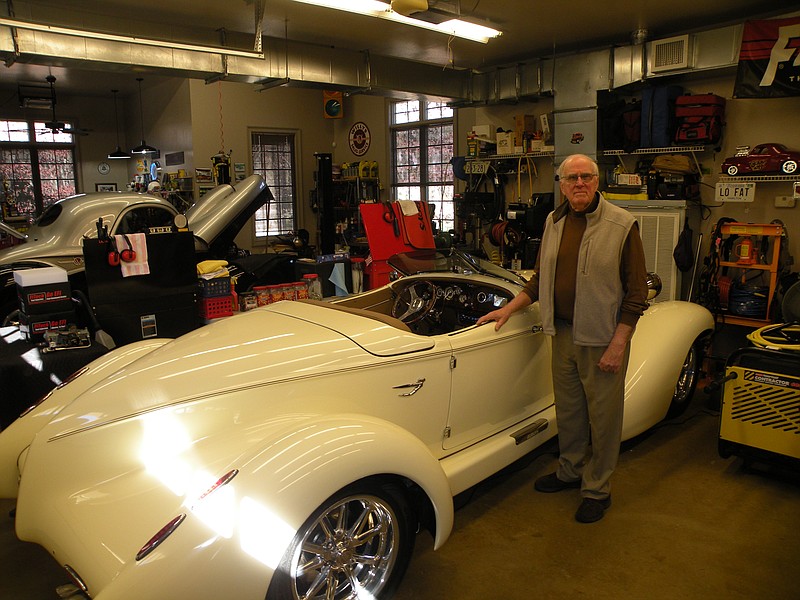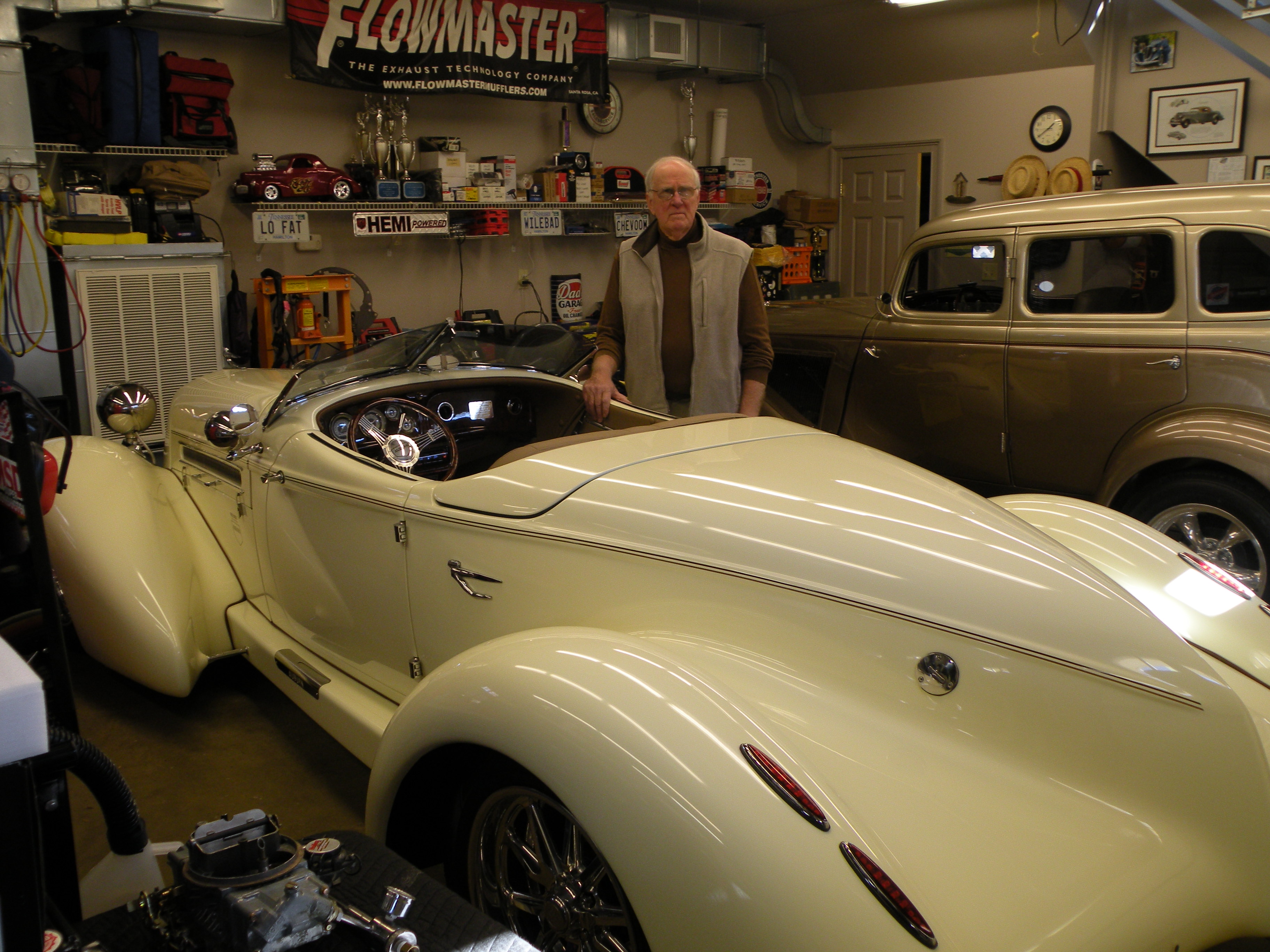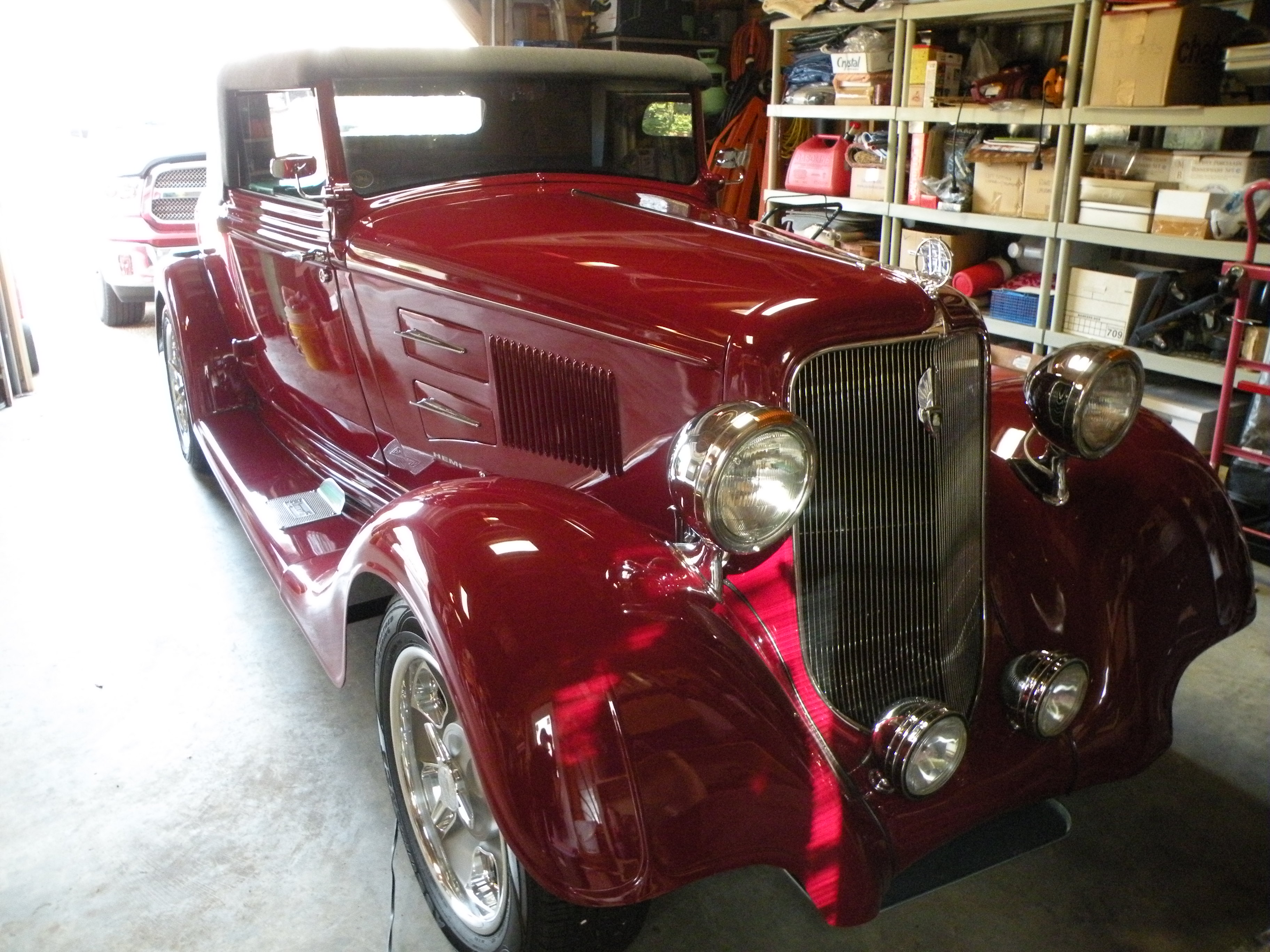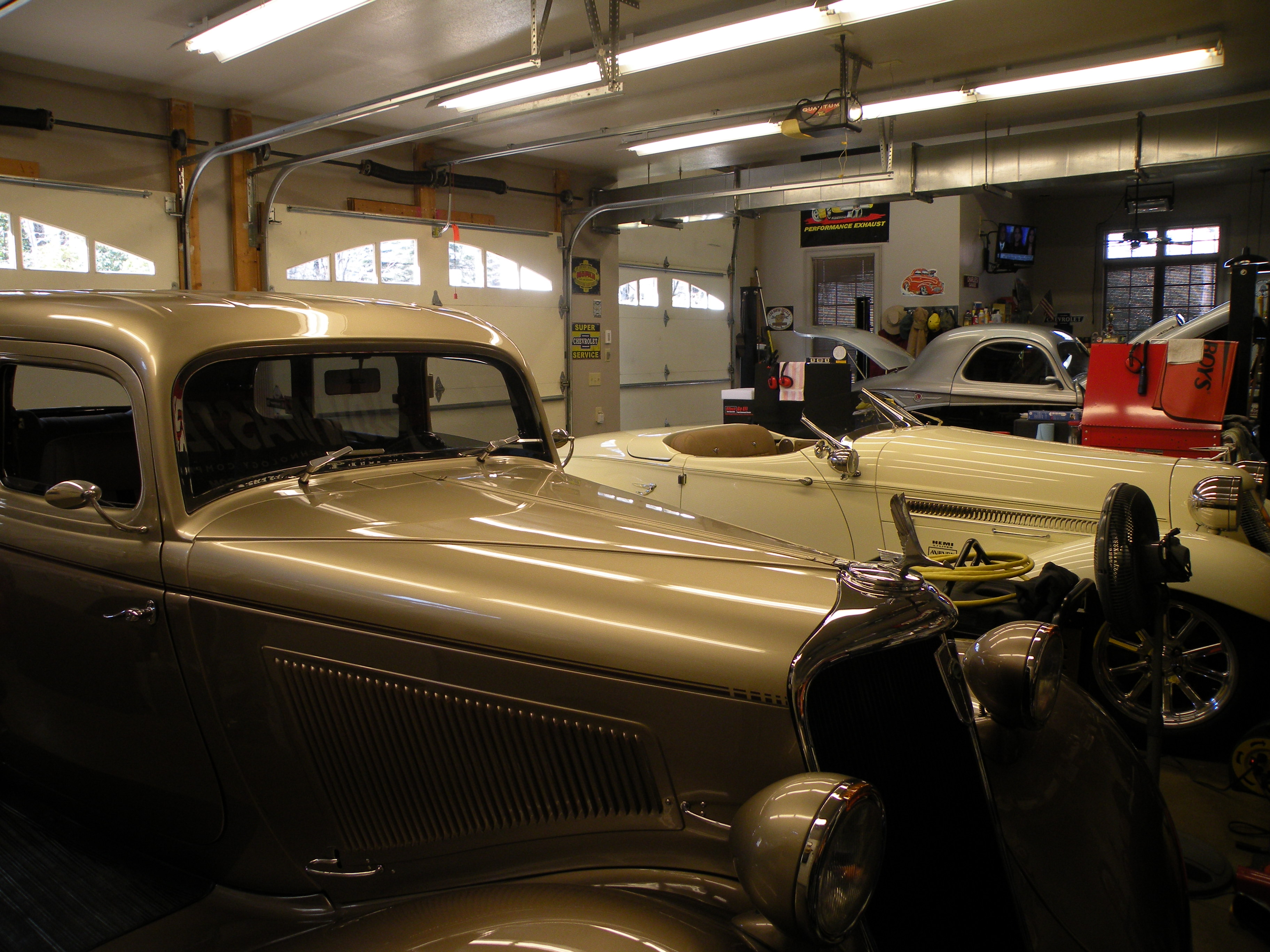Restoring and building cars has always been a family thing for Walden resident Charles Adams, who picked up the hobby from his father and has since passed his passion along to his two sons Steve and Noel, and now his grandson Michael.
The drive to work with cars is evident in Steve Adams' Adams Automotive shop at the front of the mountain, and locals may have seen some of Charles Adams' handiwork on display during a fundraiser held at McCoy Farm and Gardens, for which he serves on the board.
His 1936 Auburn Boattail Speedster, 1934 Studebaker Dictator and 1934 Plymouth rumble-seat convertible were the stars of a wine and cheese event held on the grounds last October. All came from the same time period that the historic-house-turned-community-venue was built.
Like the McCoy home, Adams' home has a carriage house. Though it has a similar look from the outside, Adams designed and built the structure himself to house something entirely different from the horses the McCoys kept: street rods.
Over the past 30 years, he's built seven cars, keeping the outside similar to the originals, while upgrading the suspension and drive train to the latest technology. Adams said his cars are considered "street rods," a term used to describe vehicles made before 1949, with the drive train typically upgraded to a later, more reliable model. For example, his Auburn is powered by a 5.7-liter electronic Hemi, and he's currently working on a fuel injection conversion of a carbureted 454-cubic-inch Chevrolet big-block engine for his 1941 Willys.
While his cars look nearly identical to the originals on the outside, street rods - as opposed to cars restored as classics - typically have upgrades such as swanky interiors, after-market wheels or state-of-the-art sound systems.
Sometimes, he said, he starts a project because he finds a car he likes, such as the Studebaker, and other times he'll run across a drive train and say to himself, "What can I put this in?"
A former mechanical engineer, Adams retired in 2007, and he finds car building a good way to continue to use the skills he developed throughout his career.
He eventually parts with his least favorite creations when the "carriage house" runs out of space (there's room for six) which is why he ended up selling two last year.
"It's hard to part with them," said Adams. "You put so much time in, they kind of become a part of you. But if you enjoy building, you have to make room for the next project... and the money to reinvest in the next project."
Email Emily Crisman at ecrisman@timesfreepress.com.



